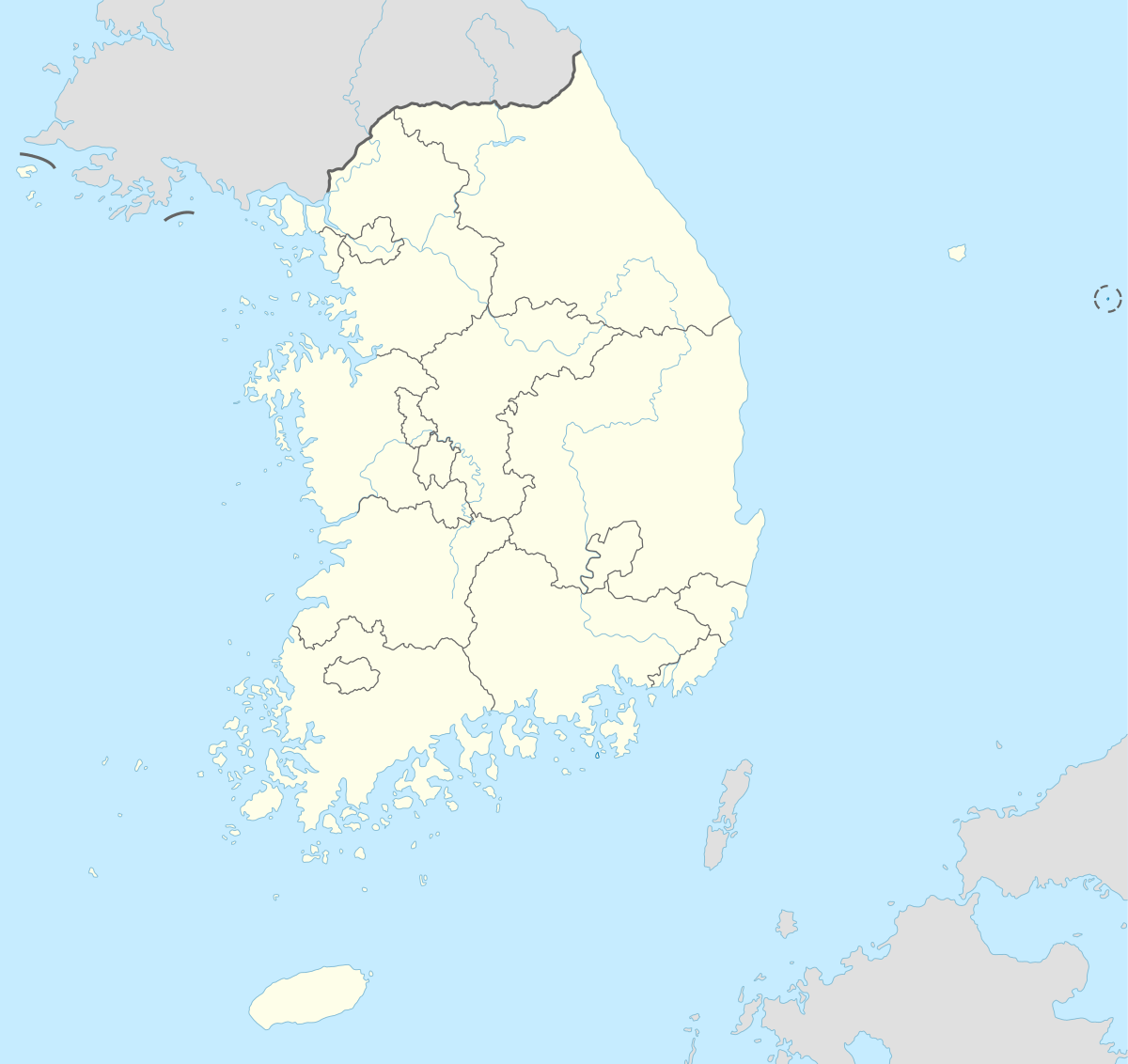Donggureung
| Donggureung | |
|---|---|
|
Geonwolleung | |
| Location | 197 Donggureung-ro, Guri, Gyeonggi-do[1] |
| Coordinates | 37°37′21″N 127°07′55″E / 37.622608°N 127.132075°ECoordinates: 37°37′21″N 127°07′55″E / 37.622608°N 127.132075°E |
| Area | 1,96 km²[1] |
| Governing body | Cultural Heritage Administration of Korea |
| Type | Cultural |
| Criteria | iii, iv, vi |
| Designated | 2009 (33rd session) |
| Reference no. | 1319 |
| State Party |
|
| Region | Asia and Australasia |
 Donggureung | |
| Donggureung | |
| Hangul | 동구릉 |
|---|---|
| Hanja | 東九陵 |
| Revised Romanization | Donggureung |
| McCune–Reischauer | Tongkurŭng |
Donggureung, meaning "East Nine Royal Tombs", is a cluster of Joseon Dynasty royal tombs, the largest of its kind in South Korea. 17 Joseon kings and queens are buried here. The cluster houses a myo type tomb (of a royal family member), as well. The cluster is located in Guri, Gyeonggi-do.[1][2][3][4][5]
The construction of the cluster was ordered by Taejong of Joseon in 1408 and the ninth tomb was placed there in 1855.[2]
List of tombs
| Tomb | Deceased | Year | |
|---|---|---|---|
| Geonwolleung (건원릉) | King Taejo | 1408 | |
| Mongneung (목릉) | King Seonjo Queen Uiin (의인) Queen Inmok (인목) | 1600 | |
| Hyeolleung (현릉) | King Munjong Queen Hyeondeok (현덕) | 1452 | |
| Sureung (수릉) | Crown Prince Hyomyeong (posthumous name: King Ikjong (익종) Queen Sinjeong (신정) (posthumous name) | 1890 | |
| Hwireung (휘릉) | Queen Jangnyeol (King Injo's wife) | 1688 | |
| Gyeongneung (경릉) | King Heonjong Queen Hyohyeon Queen Hyojeong | 1849 | |
| Wolleung (원릉) | King Yeongjo Queen Jeongsun | 1776 | |
| Hyereung (혜릉) | Queen Danui (단의) (King Gyeongjong's wife ) | 1718 | |
| Sungneung (숭릉) | King Hyeonjong Queen Myeongseong | 1674 | |
| Myeongbinmyo (명빈묘) | Royal Concubine Myeong-bin ( King Taejong's concubine) | 1479 | |
| Source: Cultural Heritage Administration[3] | |||
References
- 1 2 3 "구리 동구릉 (九里 東九陵)" (in Korean). Cultural Heritage Administration. Retrieved 2015-11-25.
- 1 2 "East Nine Royal Tombs, Guri". Cultural Heritage Administration. Retrieved 2015-11-25.
- 1 2 "구리 동구릉" (in Korean). Cultural Heritage Administration. Retrieved 2016-01-05.
- ↑ "Donggureung Royal Tomb [UNESCO World Heritage] (구리 동구릉 [유네스코 세계문화유산])". Korea Tourism Organisation. Retrieved 2016-01-22.
- ↑ Oh Hong-seok (2009). Traditional Korean Villages. The spirit of Korean cultural roots. Ewha Womans University Press. p. 68. ISBN 9788973007844.
| Wikimedia Commons has media related to Geonwolleung. |
| Wikimedia Commons has media related to Sureung. |
This article is issued from Wikipedia - version of the 1/23/2016. The text is available under the Creative Commons Attribution/Share Alike but additional terms may apply for the media files.